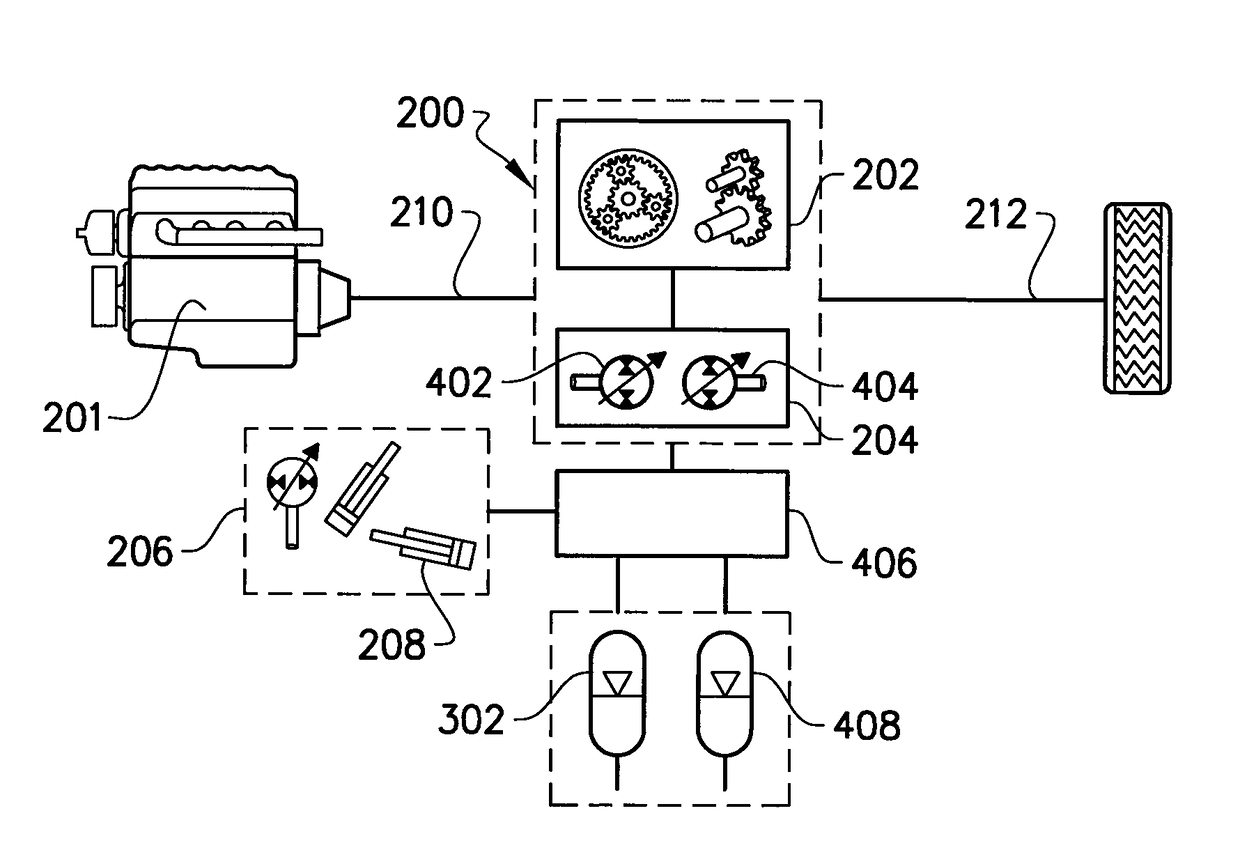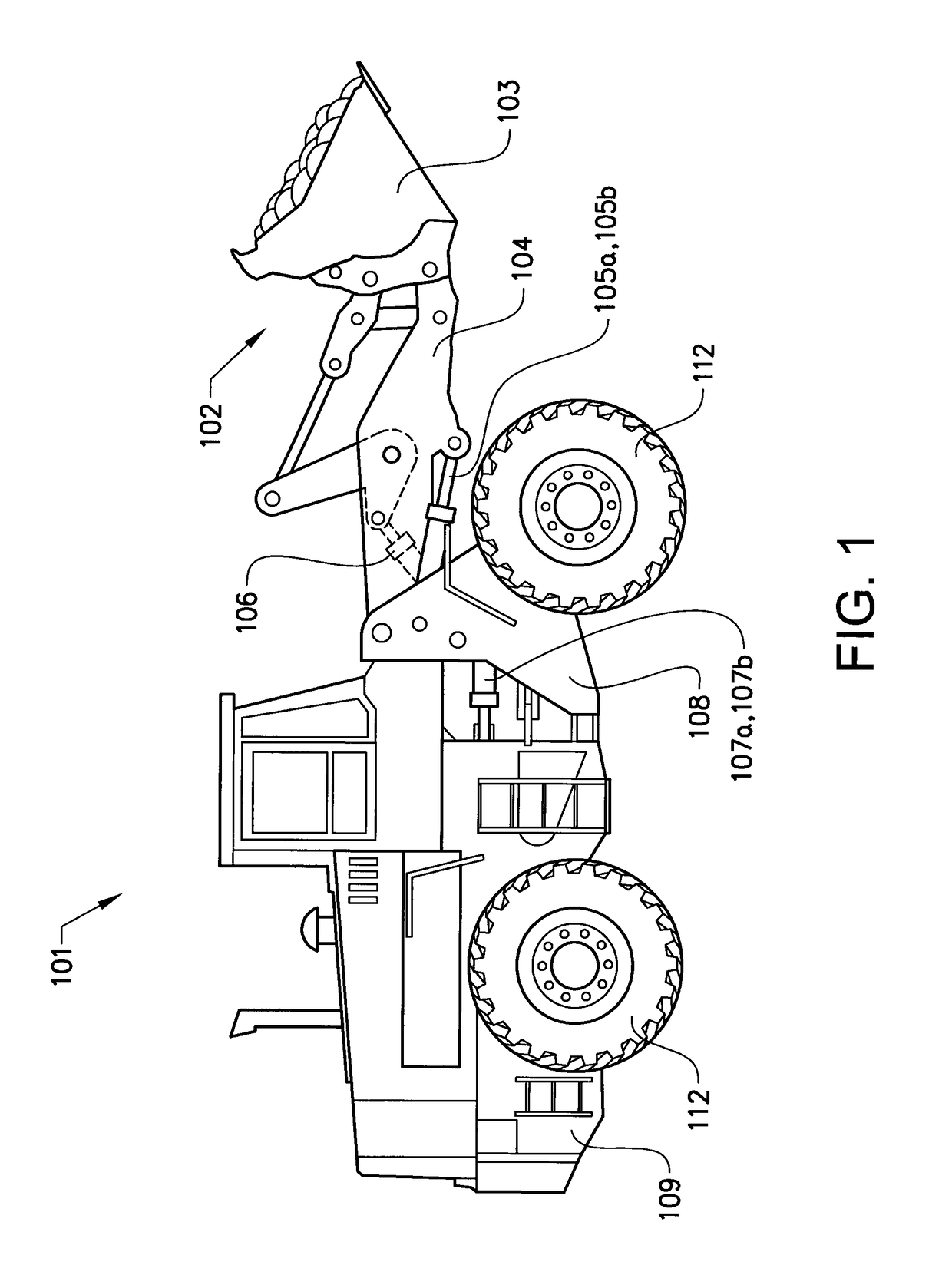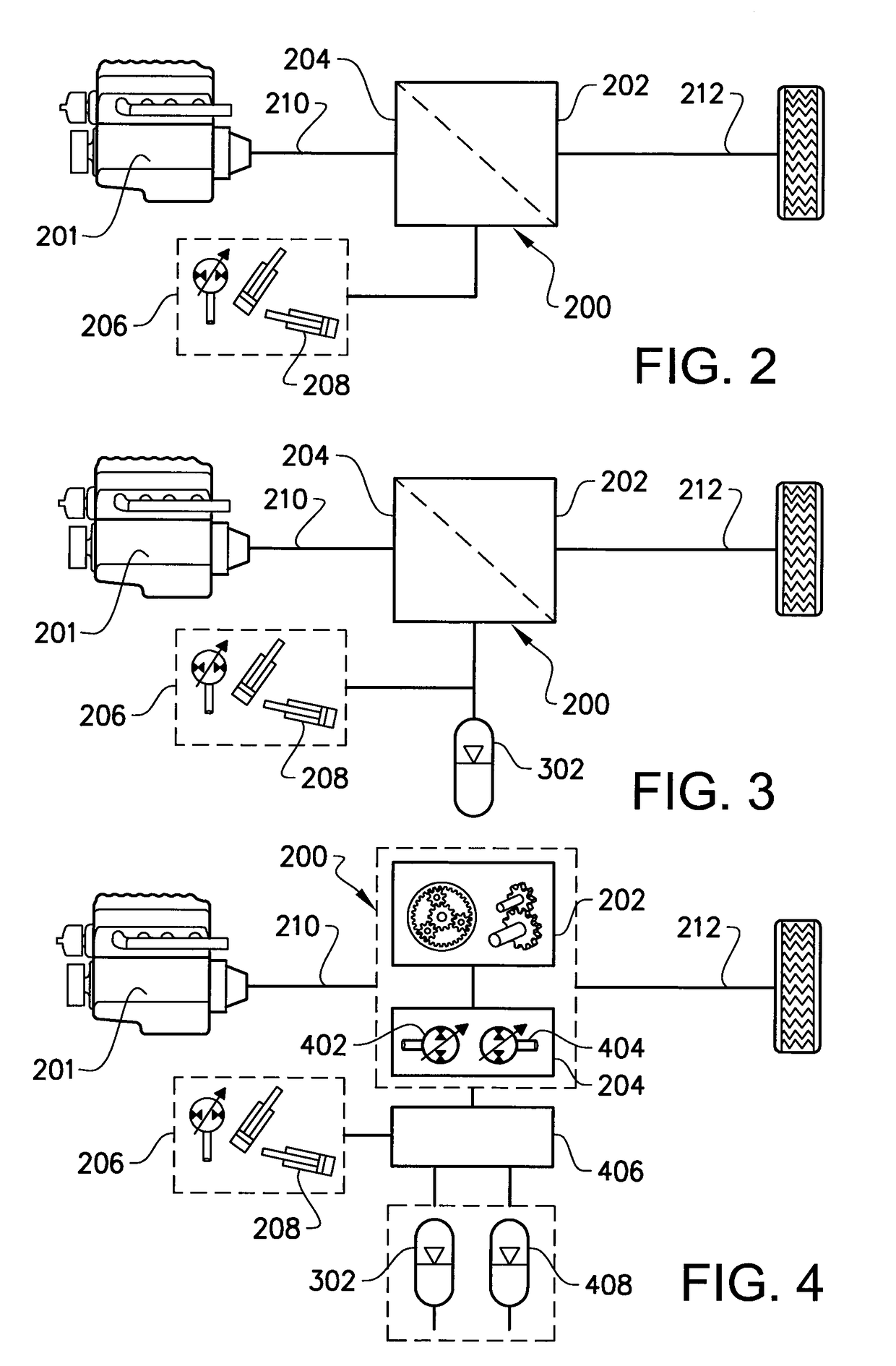Power system for a working machine
a power system and working machine technology, applied in fluid hybrid vehicles, fluid gearings, vehicles, etc., can solve the problems of limited maximum flow of hydraulic machines, small flow demand of hydraulics, and large power loss over torque converters, so as to increase the pressure level of accumulators and improve recuperation efficiency
- Summary
- Abstract
- Description
- Claims
- Application Information
AI Technical Summary
Benefits of technology
Problems solved by technology
Method used
Image
Examples
Embodiment Construction
[0061]In the present detailed description, various embodiments of a power system according to the present invention are mainly discussed with reference to a power system for a wheel loader. It should however be noted that this by no means limits the scope of the present invention which is equally applicable to power systems in other types of working machine or vehicle
[0062]Reference is now made to FIG. 1, illustrating a working machine 101, here in the form of a wheel loader having an implement 102. The term “implement” is intended to comprise any kind of tool using hydraulics, such as a bucket, a fork or a gripping, tool arranged on a wheel loader, or a container arranged on an articulated hauler. The implement illustrated comprises a bucket 103 which is arranged on an arm unit 104 for lifting and lowering the bucket 103, and further the bucket 103 can be tilted or pivoted relative to the arm unit 104. The wheel loader 101 is provided with a hydraulic system for example to lift and...
PUM
 Login to View More
Login to View More Abstract
Description
Claims
Application Information
 Login to View More
Login to View More - R&D
- Intellectual Property
- Life Sciences
- Materials
- Tech Scout
- Unparalleled Data Quality
- Higher Quality Content
- 60% Fewer Hallucinations
Browse by: Latest US Patents, China's latest patents, Technical Efficacy Thesaurus, Application Domain, Technology Topic, Popular Technical Reports.
© 2025 PatSnap. All rights reserved.Legal|Privacy policy|Modern Slavery Act Transparency Statement|Sitemap|About US| Contact US: help@patsnap.com



